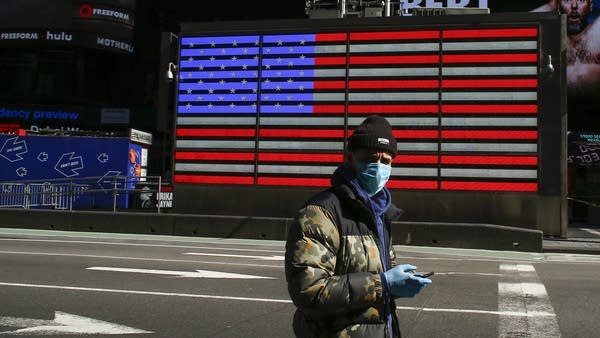
China may be the only economy in the world returning to “normal,” but it’s import picture still looks pretty bad — down 14% according to new numbers Thursday.
As far as buying American goods, China is way off track in terms of import targets Beijing agreed to in its trade deal with Washington, signed in January. Of course, the pandemic slammed both economies, but already President Donald Trump is threatening to kill the deal and raise more tariffs. The two countries plan to meet on trade issues next week.
Typically, trade deals reduce tariffs and then let capitalism figure out who buys what and how much. But the U.S.-China deal has a target that China buy an average $12 billion in American goods each month.
Right now, the actual imports are less than half that, according to S&P’s Global Market Intelligence. Chris Rogers, a contributor to S&P Global, said China hardly bought anything when the pandemic hit there.
“While the economy was locked down, that of course was going to trim a lot of demand,” Rogers said. “That demand will have picked up in late March, but of course American manufacturing and American farmers and American energy producers aren’t there.”
There to make stuff, or transport it, during our disease peak. Case in point: the meatpacking plants shutting down, as workers got sick from the virus.
U.S. exports of cars to China fell, as did soybeans, which tend to trade in the winter and spring.
“Both sides are having the outbreak in the peak demand season for soybean exports,” said Wendong Zhang, assistant professor of economics at Iowa State University.
To most analysts, the Chinese import target was always a long shot — ambitious, pandemic or no. But Zhang sees one way to get there.
“The only way to do it is to buy some of the products that you would otherwise buy from other countries and now buy from the U.S.,” Zhang said.
That would mean the government butt into markets, which the free-trade deal was designed to avoid. If the agreement goes kaput, as Trump now threatens, he’d put more tariffs on Chinese stuff coming here.
“Putting tariffs on consumer goods and other things we would want people to be buying to help the economy get back on its feet doesn’t seem like the right domestic economic decision,” said Lynn Fischer Fox, a trade lawyer at Arnold & Porter. Not to mention the stock market potentially flipping out.













